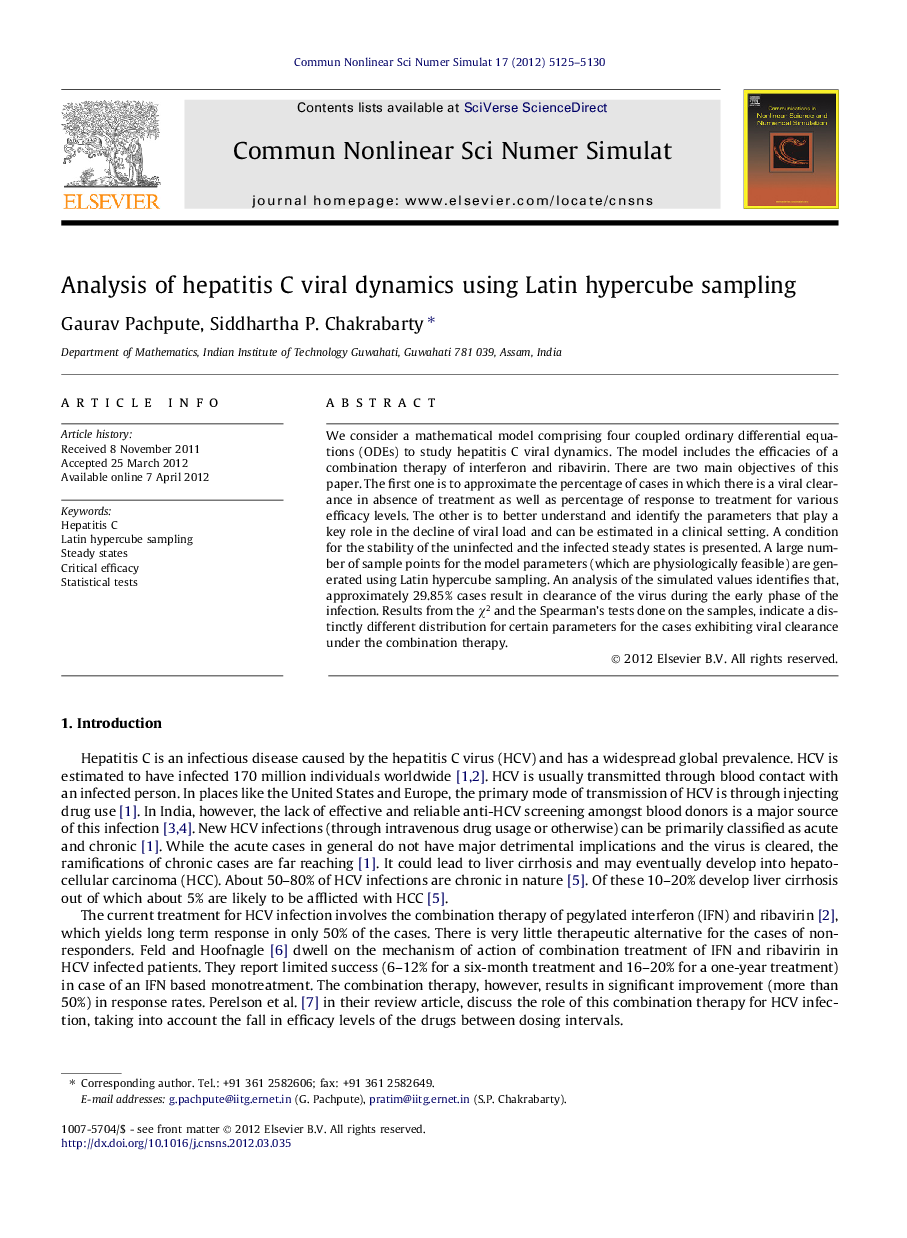| Article ID | Journal | Published Year | Pages | File Type |
|---|---|---|---|---|
| 767034 | Communications in Nonlinear Science and Numerical Simulation | 2012 | 6 Pages |
We consider a mathematical model comprising four coupled ordinary differential equations (ODEs) to study hepatitis C viral dynamics. The model includes the efficacies of a combination therapy of interferon and ribavirin. There are two main objectives of this paper. The first one is to approximate the percentage of cases in which there is a viral clearance in absence of treatment as well as percentage of response to treatment for various efficacy levels. The other is to better understand and identify the parameters that play a key role in the decline of viral load and can be estimated in a clinical setting. A condition for the stability of the uninfected and the infected steady states is presented. A large number of sample points for the model parameters (which are physiologically feasible) are generated using Latin hypercube sampling. An analysis of the simulated values identifies that, approximately 29.85% cases result in clearance of the virus during the early phase of the infection. Results from the χ2χ2 and the Spearman’s tests done on the samples, indicate a distinctly different distribution for certain parameters for the cases exhibiting viral clearance under the combination therapy.
► Sample parameters generated for an HCV model using Latin hypercube sampling. ► Analysis indicated approximately 29.85% cases with stable uninfected steady state. ► Statistical tests show correlation between certain parameters while not for others.
